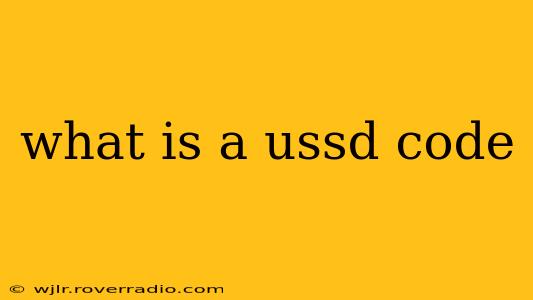USSD, or Unstructured Supplementary Service Data, codes are those short codes you dial on your mobile phone, often starting with a star (*) and ending with a hash (#), to access various services without needing an internet connection. Think of them as a quick and simple way to interact with your mobile network and other service providers directly from your phone. They're like a hidden menu offering a range of functionalities, all accessed through a simple sequence of numbers and symbols.
Unlike apps that require data, USSD codes work over a network's signaling channel, making them incredibly useful in areas with limited or no internet access. This accessibility makes them a vital tool for communication and service access, especially in developing countries.
How Do USSD Codes Work?
USSD codes function by sending short messages between your phone and your mobile network's servers. When you dial a USSD code, your phone initiates a session with the network, which then processes your request and sends back a response. This interaction happens in real-time, providing immediate feedback. The simplicity of the system ensures that even basic mobile phones can access these services.
What Can You Do With USSD Codes?
The range of services accessible via USSD codes is surprisingly broad and varies depending on your network provider and location. Some common uses include:
-
Checking your account balance: This is arguably the most popular use of USSD codes. Most mobile networks have a dedicated code to quickly check your remaining airtime or data balance.
-
Buying airtime or data: You can often top up your account directly using USSD codes, eliminating the need for third-party apps or websites.
-
Paying bills: Some providers allow bill payments for utilities, subscriptions, or other services through USSD codes.
-
Accessing mobile money services: Mobile money platforms, like M-Pesa or Airtel Money, heavily rely on USSD codes for transactions like sending and receiving money, checking balances, and paying merchants.
-
Getting information about your network: You can often find details about your plan, network coverage, and other relevant information using specific USSD codes.
What are the Advantages of Using USSD Codes?
- Accessibility: USSD works even without an internet connection, making it accessible to a wider range of users.
- Simplicity: The interface is extremely user-friendly and easy to understand, even for those with limited technological skills.
- Speed: The response time is usually very quick, providing immediate feedback.
- Security: While not foolproof, USSD sessions are generally secure, offering a relatively safe method for simple transactions.
What are the Disadvantages of Using USSD Codes?
- Limited functionality: USSD codes are designed for simple tasks, and more complex applications are not feasible.
- Lack of visual appeal: The user interface is purely text-based, which can be less engaging than graphical interfaces.
- Dependence on network connectivity: Although it doesn't require data, it still requires a stable network connection to function.
- Security vulnerabilities: While generally secure for simple tasks, complex transactions using USSD codes could potentially be vulnerable to sophisticated attacks.
Frequently Asked Questions (FAQs)
Are USSD codes free to use?
The cost of using USSD codes varies depending on your network provider and the specific service. Some are free, while others may incur a small charge. Check with your provider for details.
How do I find USSD codes for my network?
You can typically find USSD codes on your network provider's website, in your welcome pack, or by contacting customer support.
Are USSD codes secure?
USSD codes offer a reasonable level of security for simple transactions. However, for large financial transactions, it's always recommended to use more secure methods like banking apps.
Can I use USSD codes internationally?
USSD codes are typically specific to your network provider and country. A USSD code that works in one country may not work in another.
In conclusion, USSD codes offer a valuable and accessible way to interact with your mobile network and various services, especially in areas with limited internet connectivity. Understanding their function and capabilities can significantly enhance your mobile experience.
